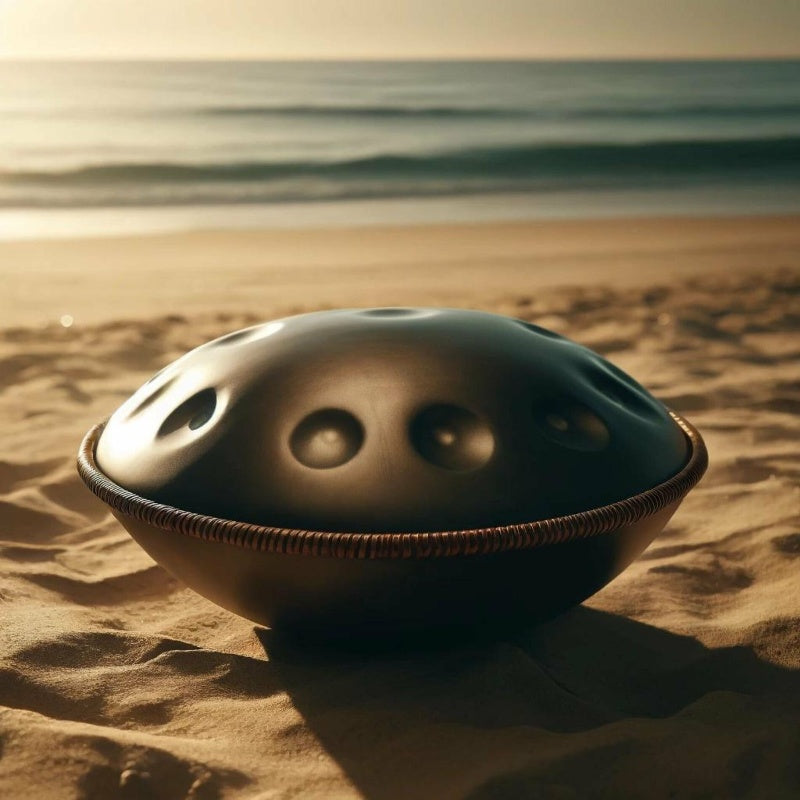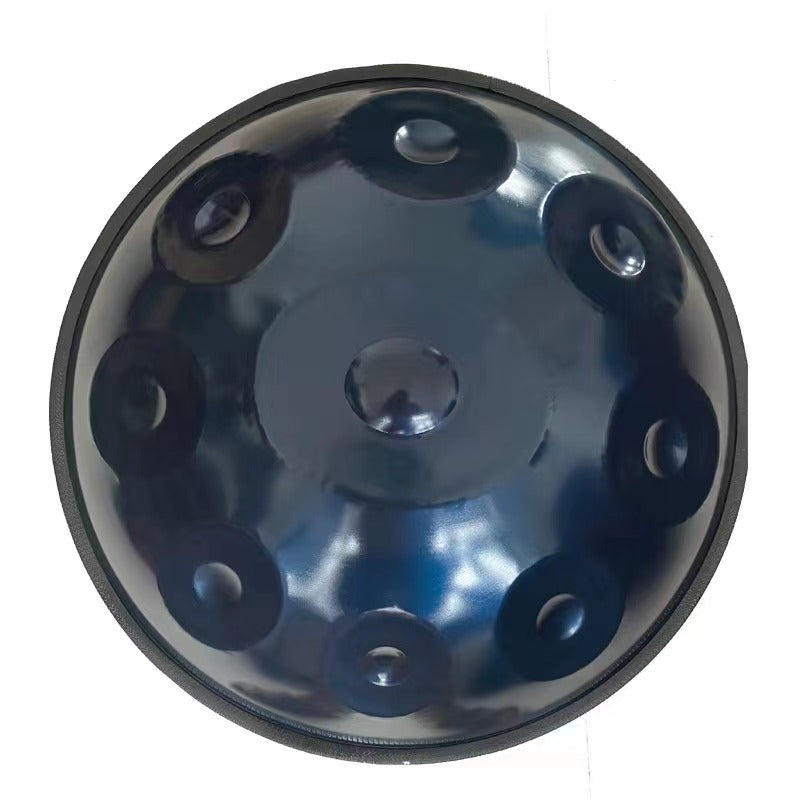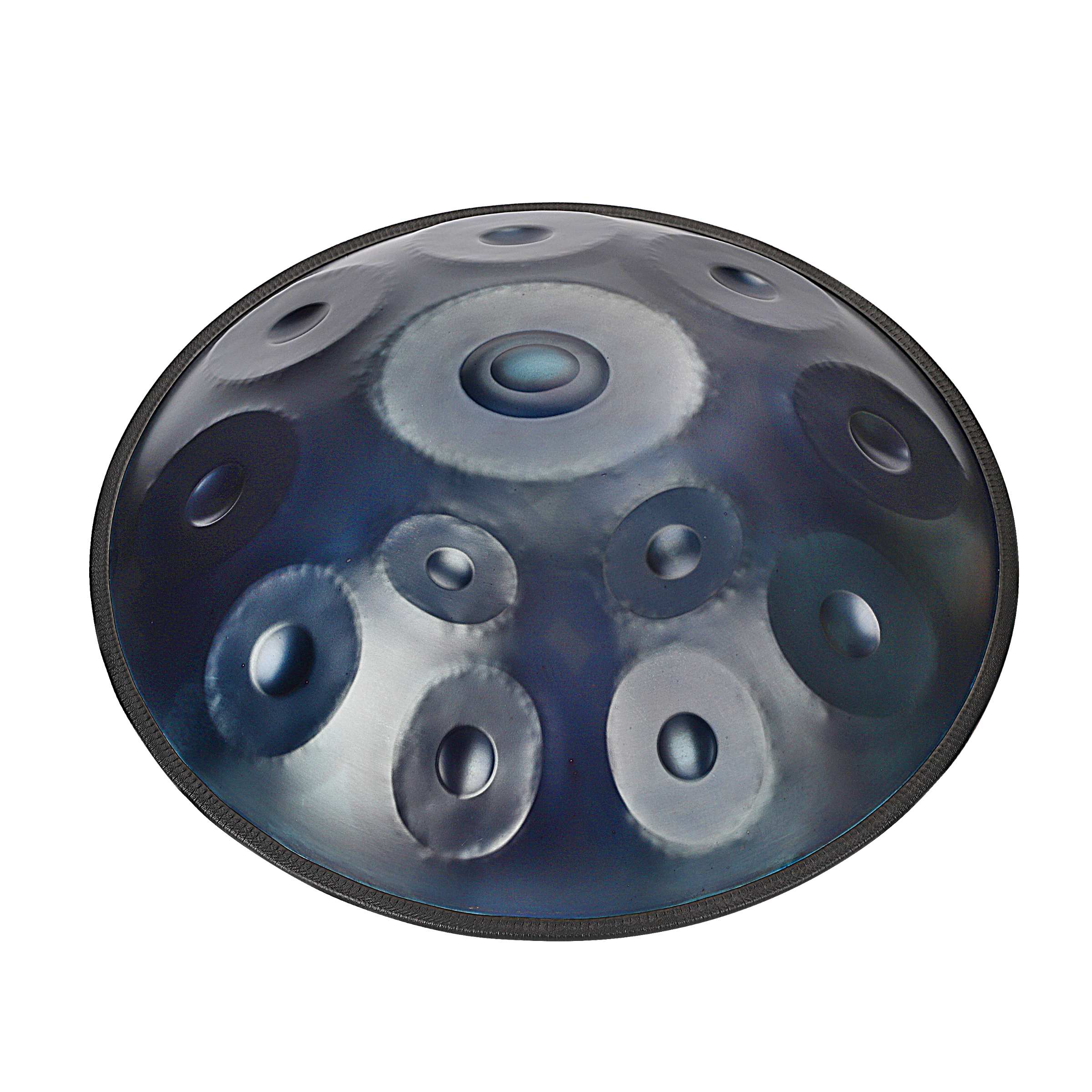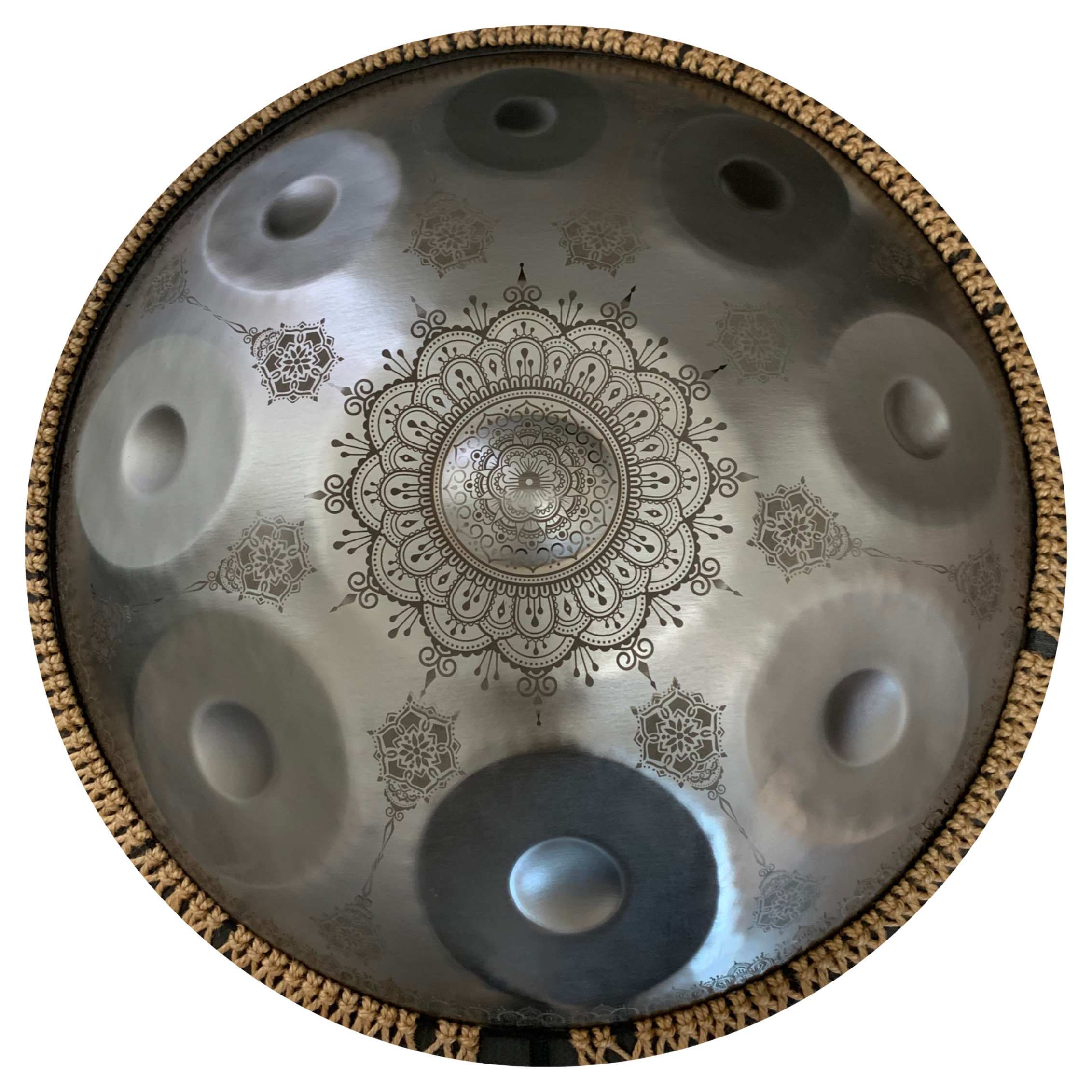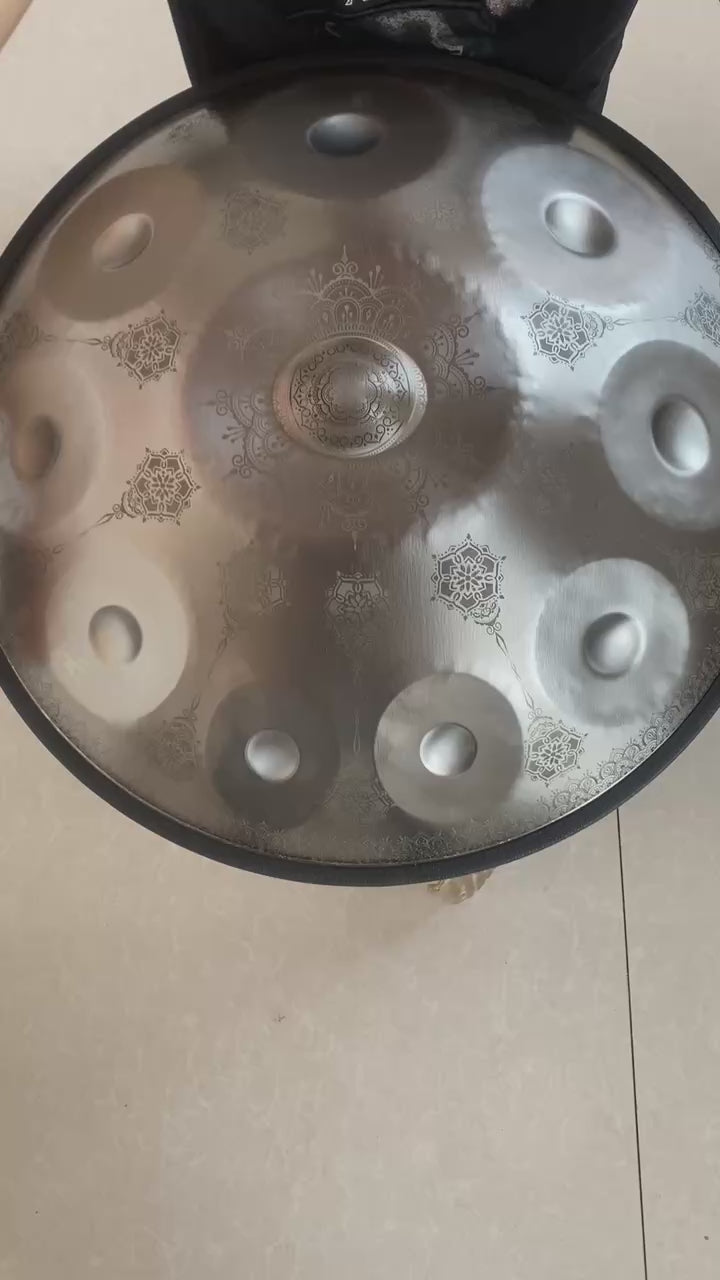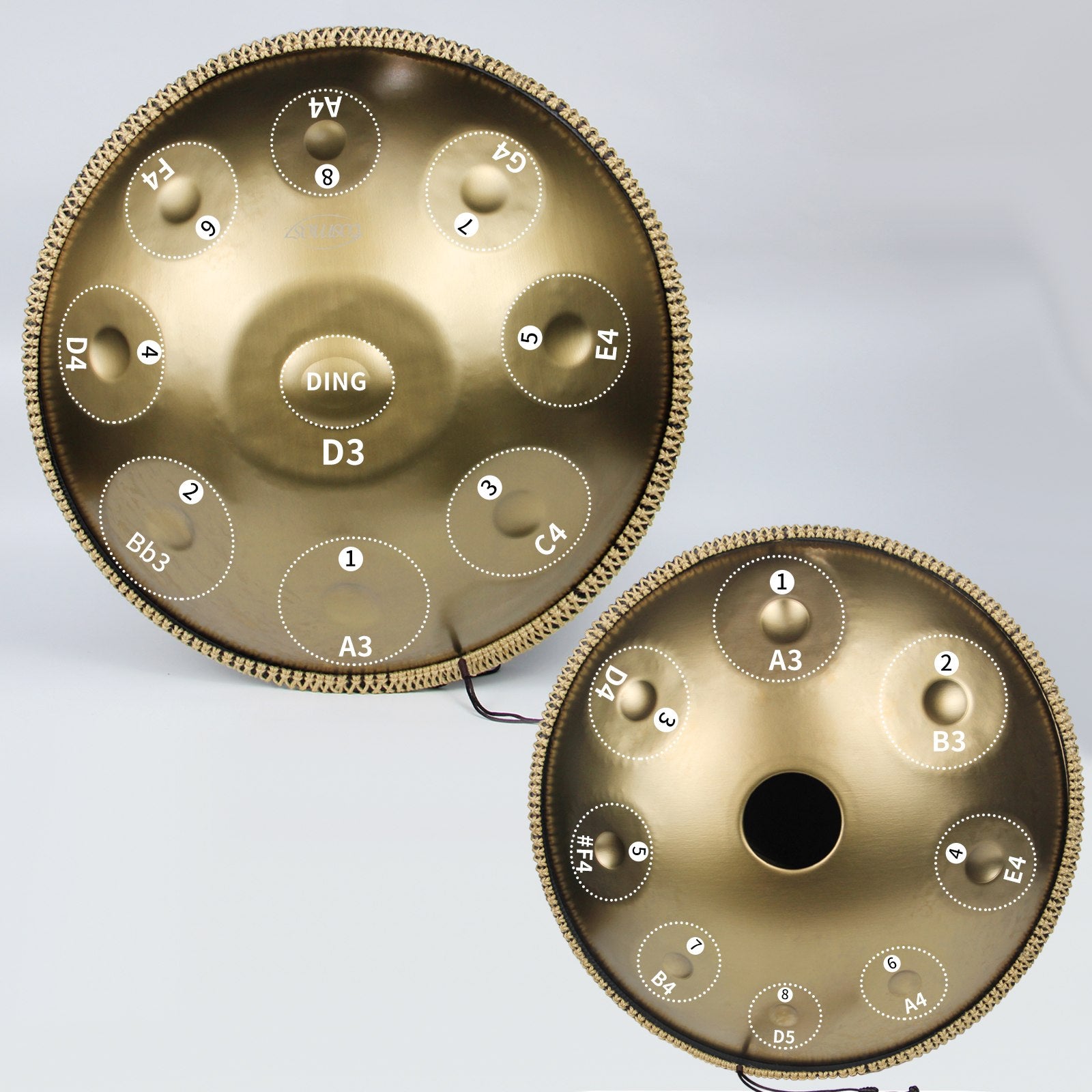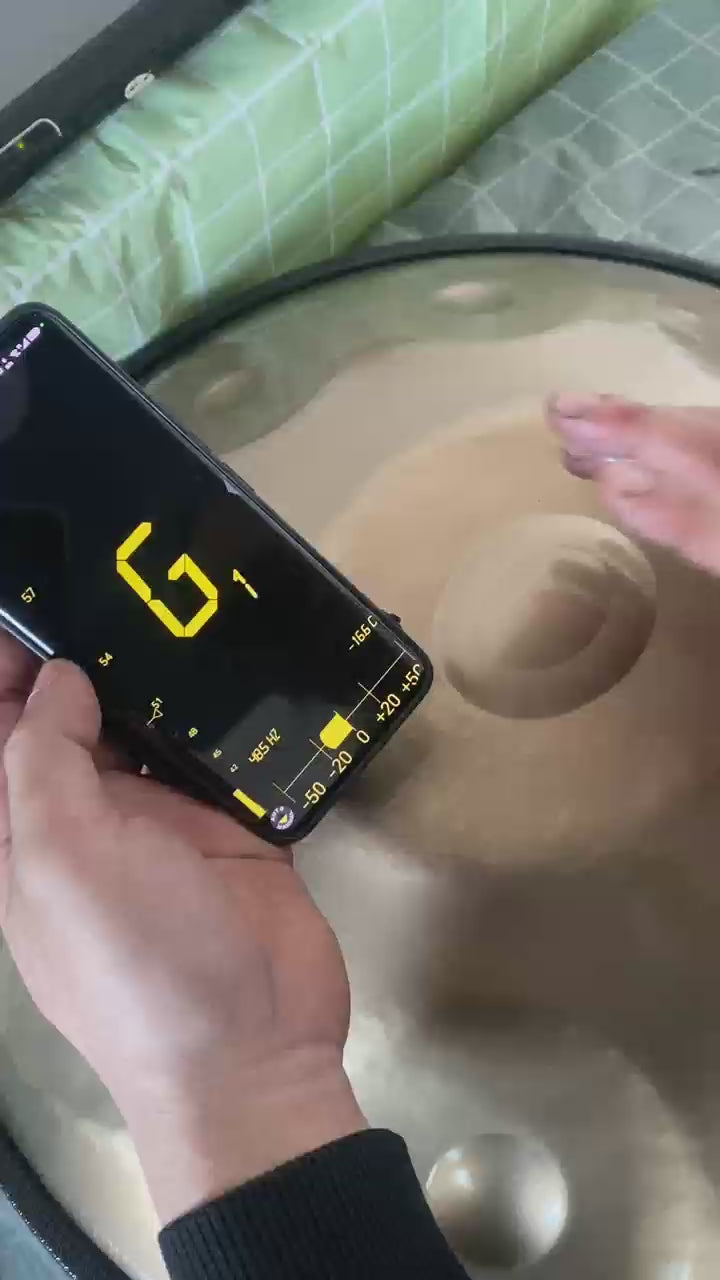La musique éthérée des handpans et des tambours Hang a volé le cœur des musiciens, tandis qu'un culte s'est formé autour de cette classe mystique d'instruments à l'échelle mondiale. Les instruments partagent la même construction en acier et les tonalités éthérées qui en résultent, mais avec des différences évidentes qui rendent chaque instrument unique les uns des autres. Cette connaissance de ces différences est essentielle pour toute personne qui souhaite acheter un handpan ou un tambour Hang. Dans le guide suivant, vous pouvez lire d'où ils viennent, comment ils sont construits et à quoi ressemblent les sons des deux instruments + quelques conseils pour les acheter.

Origines et évolution
Tambour suspendu
Le Hang drum, ou plus communément appelé le "Hang", a été créé en 2000 par Felix Rohner et Sabina Schärer, tous deux originaires de PANArt Suisse. Le mot 'Hang' est tiré de l'allemand bernois "hang" et signifie main. Il est basé sur de nombreux instruments de percussion traditionnels tels que le steelpan de Trinidad, le ghatam indien ou le gamelan indonésien. Ils visaient à concevoir un instrument novateur qui incorporait les meilleures qualités de ces sons ancestraux.
Poêle à main
Une forme de développement dans le handpan. En gros, le Hang drum a évolué pour prendre sa forme actuelle, qui est maintenant connue sous le nom de HandPan. Suite à l'introduction du Hang, d'autres fabricants d'instruments ont commencé à produire ce type d'instruments. Ces instruments ont rapidement été étiquetés "handpans" pour contourner les règles de marque déposée entourant le Hang. Le mot handpan fait référence à une large famille d'instruments provenant de nombreux fabricants différents, chacun ayant ses propres méthodes de construction et d'accord de ces tambours uniques.
Construction et conception
Construction de Hang Drum
Un Hang drum a un côté inférieur (le Ding) et une coque supérieure avec des bosses métalliques creuses, un peu comme des demi-sphères. La coque supérieure, ou "Ding", est une note centrale entourée d'un à sept champs de tonalité qui sont collectivement accordés à des échelles pentatoniques. Résonateur de Helmholz (Le trou dans la coque inférieure - "Gu") Le Hang a un design de construction spécial qui émet des harmoniques liées ainsi qu'une riche résonance.
Construction de Handpan
Le Hang drum a été acheté et produit précédemment par la société PANArt. Les handpans ont un design similaire mais sont généralement fabriqués avec des matériaux différents. La majorité des handpans sont fabriqués à partir d'aciers nitrurés, inoxydables ou de plusieurs couches d'aciers traités. En général, la coque supérieure a une note centrale et plusieurs champs partiels, tandis qu'il y a un port élastique dans la coque inférieure. Contrairement au Hang, certains d'entre eux peuvent être accordés à une variété d'échelles et avaient différents nombres de champs de tonalité. La polyvalence permet aux joueurs de choisir un instrument qui s'intègre parfaitement à leur style musical.
Caractéristiques Sonores
Son du tambour suspendu
Les hang drums ont un son chaud et mélodique, plein d'harmoniques riches. Ce design permet aux fréquences harmoniques complexes d'interagir les unes avec les autres, produisant ainsi une sensation auditive éthérée et apaisante. Les autres notes Ding se mélangent bien avec la note centrale, permettant aux utilisateurs de présenter de belles compositions pendant le jeu. Le port Gu inférieur ajoute une résonance unique / contribue au son global de l'instrument.
Son de handpan
En raison de leur construction et de leurs réglages divers, les handpans peuvent produire une gamme avec plus d'options pour le son. La qualité sonore varie parmi les handpans en fonction du type de système de réglage pratiqué par chaque fabricant. Il existe différentes gammes de handpan, certaines majeures et mineures comme dans la théorie musicale occidentale, tandis que d'autres sont moins courantes, par exemple non compatibles avec un ensemble de notes connu. Un beau handpan peut sonner à la fois brillant et exalté ou profond et méditatif en raison de son accord, qui est lié à la construction.
Considérations d'achat
Handpan à vendre
Lorsque vous recherchez un handpan à vendre, vous devez prendre en compte le fabricant, ainsi que le type de jingle utilisé et l'espacement sur leur échelle ou ton. Généralement fabriqués par des artisans qualifiés, les handpans haut de gamme sont difficiles à accorder correctement car le réglage fin est un processus long et coûteux. En raison de la popularité de l'instrument, de nombreux fabricants de handpan ont de longues listes d'attente et les prix peuvent varier considérablement, allant d'instruments de très bas niveau à des modèles de premier ordre fabriqués par des créateurs expérimentés.
Tambour suspendu à vendre
Il peut sembler impossible d'acheter un Hang drum puisque PANArt a cessé de fabriquer le hang original en 2013. Ils sont maintenant rares et peuvent se vendre à des prix significatifs sur le marché des instruments de musique d'occasion. En tant que collectionneur ou musicien à la recherche d'un Hang drum original, il faut être prudent pour repérer les contrefaçons et s'assurer d'acheter auprès de distributeurs enregistrés. La rareté, mais aussi l'importance historique du Hang drum ajoutent à sa valeur et à son attrait.
Choisir le bon instrument
Objectifs et préférences musicaux
Hang Drum : Si vous êtes particulièrement attiré par le son unique et la valeur historique d'un authentique Hang drum, acheter un handpan d'occasion serait judicieux. Méditation & Style Mélodique - L'accord constant du Hang et les riches harmoniques que vous pouvez utiliser ici font un parfait match.
Handpan : Offre une gamme encore plus large de possibilités musicales, avec des options plus variées pour les gammes et les sons. )] Entre les différents fabricants et styles d'accord, vous êtes sûr de trouver un handpan qui complète vos efforts musicaux.
Considérations budgétaires
Étant donné qu'il y a très peu de tambours Hang, vous pouvez vous attendre à payer beaucoup pour un - jusqu'à 5 à 10 000 $ ou plus. Sans parler du fait que si vous avez un budget limité... peut-être qu'il serait moins coûteux de commencer avec le handpan.
Handpan : Les handpans sont disponibles à divers prix, allant de 1 000 $ à environ 4 000 $ pour les instruments haut de gamme. Handpans - options d'entrée de gamme : Les handpans d'entrée de gamme sont beaucoup plus abordables et peuvent toujours avoir un son incroyable avec une excellente jouabilité.
Contingence et Disponibilité
Hang Drum : Acquérir un hang drum vaut vraiment le travail et l'effort que vous y mettez, car il n'y en a pas beaucoup produits régulièrement maintenant, ce qui fait immédiatement augmenter son prix. Ainsi, les acheteurs potentiels cherchent généralement à se tourner soit vers le marché de l'occasion, soit vers un site d'enchères approprié et/ou à se connecter au sein de la communauté handpan par le biais d'annonces pour des offres originales.
Handpan : Le marché du handpan est plus accessible à l'acheteur moyen avec plusieurs fabricants réputés proposant des instruments à la vente. En recherchant et en vous connectant avec les fabricants via leurs sites web, leurs réseaux sociaux ou en assistant à des festivals de handpan, vous pouvez trouver le handpan parfait pour vos besoins.
Entretien et soins
Les hang drums et les handpans doivent tous deux être entretenus correctement pour qu'ils conservent un bon son sur le long terme. Voici quelques conseils d'entretien préventif :
Nettoyage régulier
Après utilisation, essuyez l'instrument avec un chiffon sec pour enlever les huiles ainsi que les empreintes digitales et l'humidité. Cela prévient la rouille et la corrosion sur les handpans en acier, comme ceux non traités ou nitrurés.
Stockage
Gardez votre instrument dans un endroit sec et frais, à l'abri de la lumière directe du soleil ou des températures extrêmes. Lorsqu'il n'est pas utilisé ou en déplacement, gardez-le en sécurité dans un étui rembourré.
Éviter les dommages
Prenez soin de votre instrument pour éviter les bosses et les rayures. Ne placez pas d'objets lourds dessus et n'utilisez pas de matériaux tranchants ou rugueux au toucher.
Entretien Professionnel
À intervalles réguliers, faites-le vérifier par un professionnel dans votre ville, qui peut retuner le handpan pour le maintenir dans les meilleures conditions. Cela concerne également le point ci-dessus, mais si vous remarquez un changement dans la qualité du son, cela devient encore plus important.
Conclusion
Les hang drums et les handpans sont des instruments fascinants qui apportent avec eux leur propre signature musicale spéciale. Bien qu'ils se ressemblent et sonnent de manière similaire, leurs racines diffèrent, tout comme les options de qualité de fabrication. Apprendre la différence peut faciliter le choix si vous recherchez un hang drum ou un handpan à vendre.
Que vous soyez intrigué par les débuts historiques du Hang drum ou excité par tout ce qui peut être accompli avec un handpan, les deux sont tout simplement deux des expériences les plus luxueuses en percussion mélodique. Réfléchir à ce que vous attendez de la musique, à combien d'argent vous avez disponible pour soutenir cet intérêt et au temps que vous pouvez y consacrer vous permettra de prendre une meilleure décision pour trouver un instrument qui correspond à vos besoins. Gardez à l'esprit que la véritable magie de jouer de ces instruments n'est pas seulement le son qu'ils produisent ; c'est cette connexion entre vous et votre musique.

